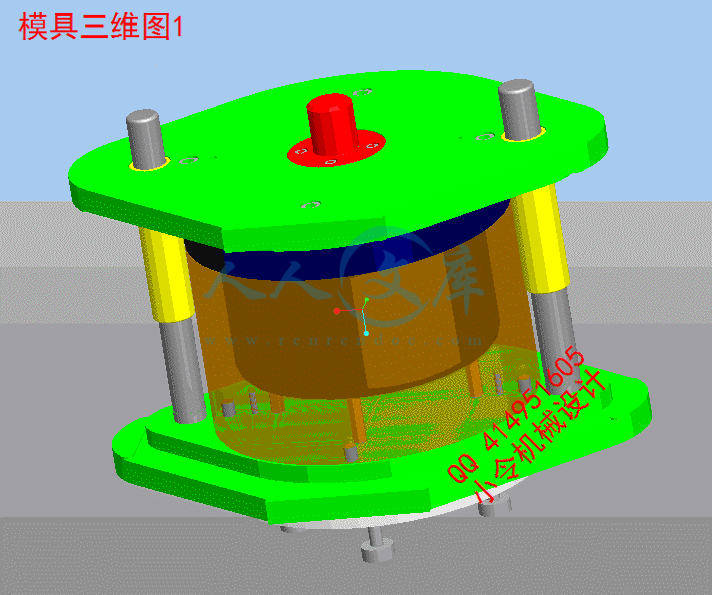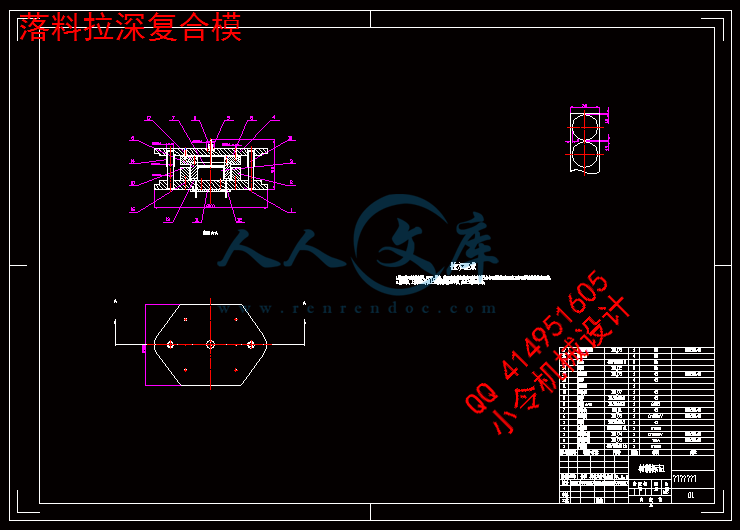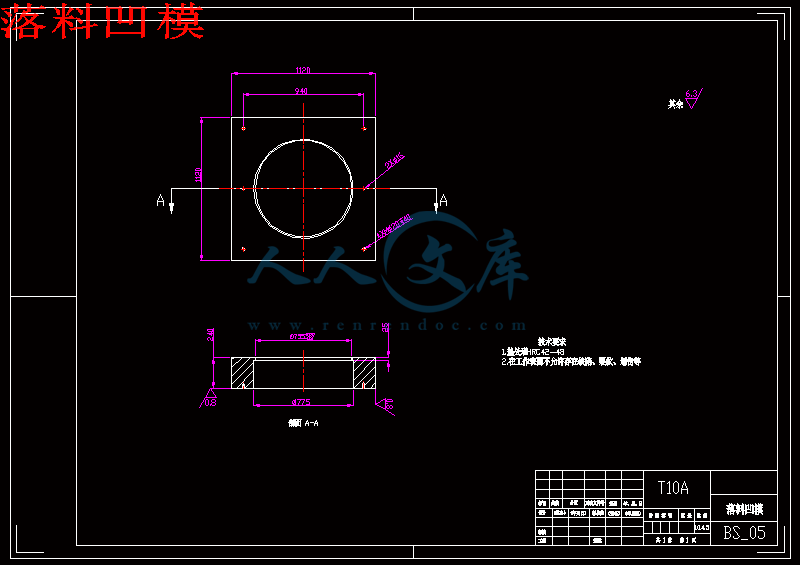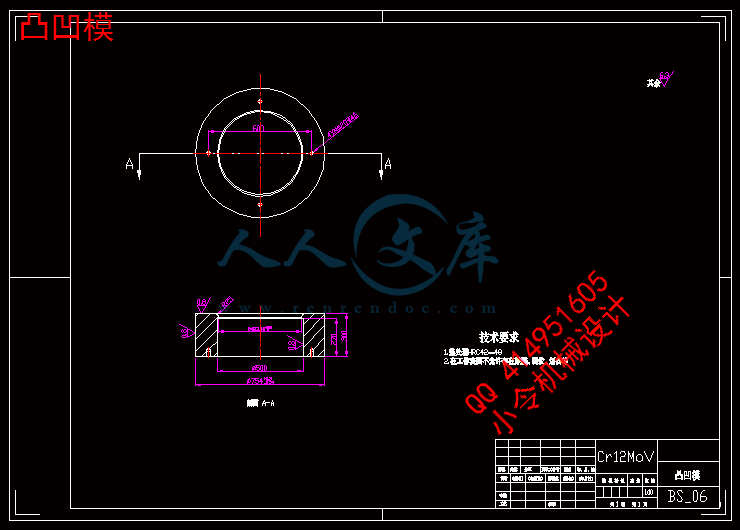中文摘要
通过分析电机盖端的结构特点,确定了其冲裁工序、拉伸序及各工序件的尺寸,介绍了整体模具的工艺设计,重点分析了拉伸模结构。冲压模具的设计方法在当下已经日趋成熟,利用传统的设计手段对电机罩壳进行完整的复合模设计。通过对零件结构的分析制定可行的工艺方案,并进行最优化选择。在完善的工艺方案基础上,对每一个工序进行工艺计算,得到准确的数据。通过参考经典的模具结构,对复合模进行结构设计。并通过计算数据对标准及非标准零件进行查找和设计。利用三维造型软件proe4.0对模具的零部件进行绘制,并进行装配得到装配图。结合proe4.0的工程图绘制功能以及二维绘图软件CAD,对三维零件及装配图进行二维工程图的绘制。传统设计方法与绘图软件的结合,一定程度上简化了模具设计的过程,提高了模具设计的效率,为冲压模具的更好发展打下了基础。
关键词:冲压模具,复合模 三维造型
Abstract
Abstract: Through analyzing on the structure characteristics of the electrical machinery end cover, determined its blanking working procedure, the drawing working procedure and various working procedures size. The process design of the while die were introduced, mainly analyzed on the drawing die structure. The design method of stamping die is becoming mature, and traditional design method is using to design compound die of motor casing. Analyzing the part structure to make feasible process scheme, and select the optimal plan. On this basis, make the process calculation of each procedure. Consult classical die structure to design the compound die. Followed that, search the standard parts and design the nonstandard parts of compound die. Using 3D modeling software proe4.0 to draw the components of die, and assembling them to get the assembly drawing. After that, make the 2D engineering drawing by the combination of proe4.0 and CAD. The process of die designing is simplified to some extent, because of the coordination of traditional design method and drawing software. Moreover, the efficiency of die designing is improved, and it lays the foundation to the better development of stamping die.
Key words: electrical machinery en cover; the pressure process ; progressive die; die design.
目录
中文摘要I
AbstractII
第一章 绪论1
1.1冲压模具的重要意义1
1.2冲压模具行业发展现状1
1.3选题的目的与意义2
第二章 工艺分析3
2.1工艺可选方案3
2.1.1冲压工艺方案一3
2.1.2冲压工艺方案二6
2.2方案分析8
2.2.1方案一分析8
2.2.2方案二分析8
2.3方案对比9
第三章 工艺计算10
3.1落料工艺计算10
3.1.1工艺性分析10
3.1.2排样与搭边10
3.1.3冲压力计算10
3.1.4压力中心计算11
3.1.5冲裁间隙11
3.1.6凸、凹模刃口尺寸计算11
3.2拉深工艺计算12
3.2.1拉深毛坯的确定12
3.2.2判断是否采用压边圈13
3.2.3拉深工艺计算13
3.2.4确定各次拉深凸、凹模圆角半径及筒壁高度14
3.2.5凸、凹模间隙及刃口尺寸15
3.2.6压边力和拉深力的计算16
3.2.7拉深功的计算17
3.3胀形工艺计算18
3.4冲孔工艺计算20
3.4.1端面孔工艺计算20
3.4.2凸缘孔工艺计算22
第四章 模具的结构与零件设计25
4.1模具的结构25
4.2模具的工作原理26
4.3模具主要零件设计27
4.3.1工作零件设计27
4.3.2卸料装置30
4.3.3模架31
4.3.4模柄34
4.4冲压设备的选择34
总结36
致谢38
参考文献38
附录39
第一章 绪论
1.1冲压模具的重要意义
模具制造是国家经济建设中的一项重要产业,振兴和发展我国的模具工业,日益受到人们的重视和关注。“模具是工业生产的基础工艺装备”也已经成为广大业内人士的共识。在电子、汽车、电机、电器、仪器、仪表、家电和通信等产品中,60%~80%的零部件都要依靠模具成形。用模具生产制件所具备的高精度、高复杂程度、高一致性、高生产率和低消耗,是其他加工制造方法所不能比拟的。模具又是“效益放大器”,用模具生产的最终产品的价值,往往是模具自身价值的几十倍、上百倍。模具工业是制造业中的一项基础产业,是技术成果转化的基础,同时本身又是高新技术产业的重要领域。












 川公网安备: 51019002004831号
川公网安备: 51019002004831号